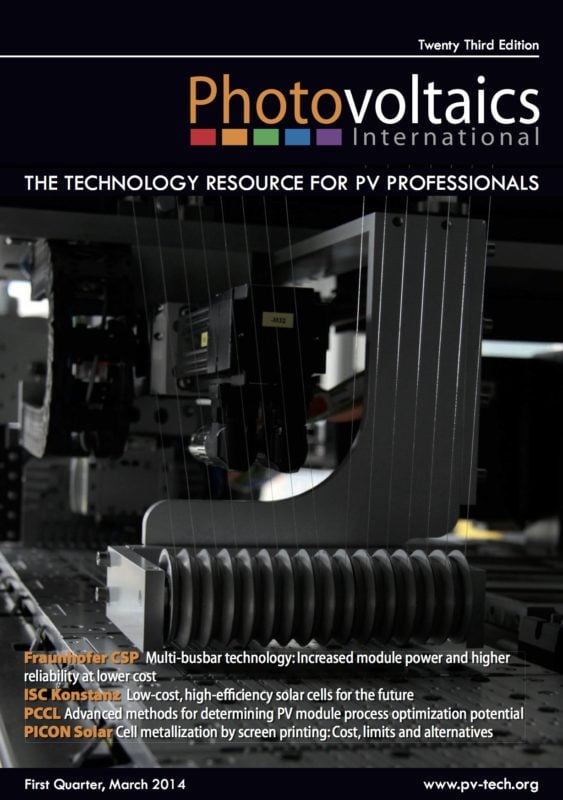By Ilka Luck, Founding Partner, PICON Solar GmbH; Steffen Schuler, PICON Solar GmbH
Although considerable progress has been made in reducing the amount of Ag required per wafer in the classic screen-printing metallization of Si solar cells, the total cost of ownership of the metallization process today accounts for more than 50% of the total cell-process-related cost. There has been pressure on cell and module manufacturers to further reduce this cost, by either improving the metallization process or applying alternative contacting technologies. In this paper, the classic screen printing of standard Si-based solar cells, which has been the main metallization technique for many years, is described in detail. The required paste volume for providing the contacts in a state-of-the-art cell production process is calculated
on the basis of the contact dimensions (fingers and busbars on the front, Al layer and Al/Ag pads on the back). Taking into account today's paste prices, equipment investment, screen cost, energy, maintenance, yield, material utilization and necessary labour, the total cost of ownership of the cell metallization is also determined. The main cost drivers are discussed in detail. The cost reduction is estimated when improved printing processes – such as double, dual or stencil printing – are employed. Other promising alternative front-contact metallization technologies are listed and their potential is briefly discussed. To evaluate the competitiveness of these technologies, the limit of today's screen-printing method and its further cost reduction potential are estimated on the basis of the physical properties of cells and printing pastes.


